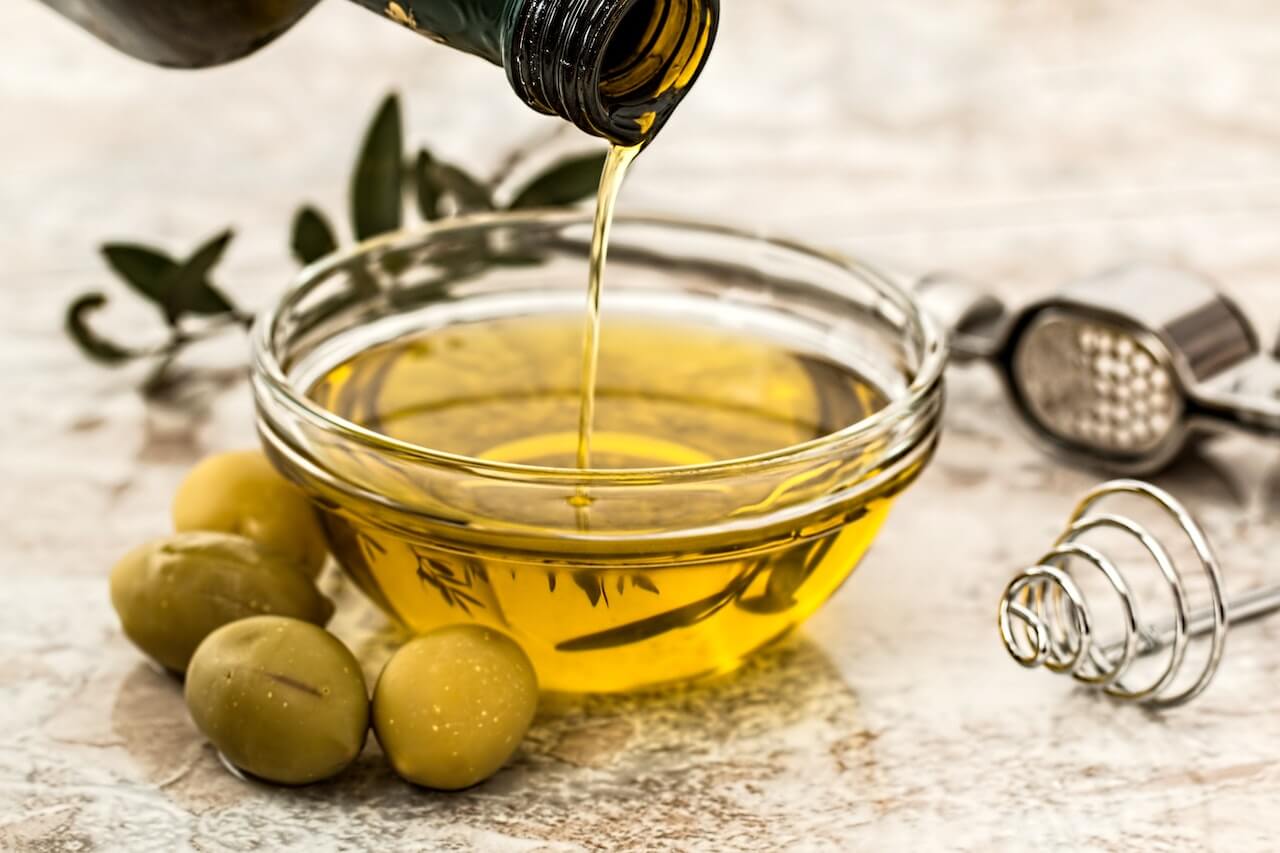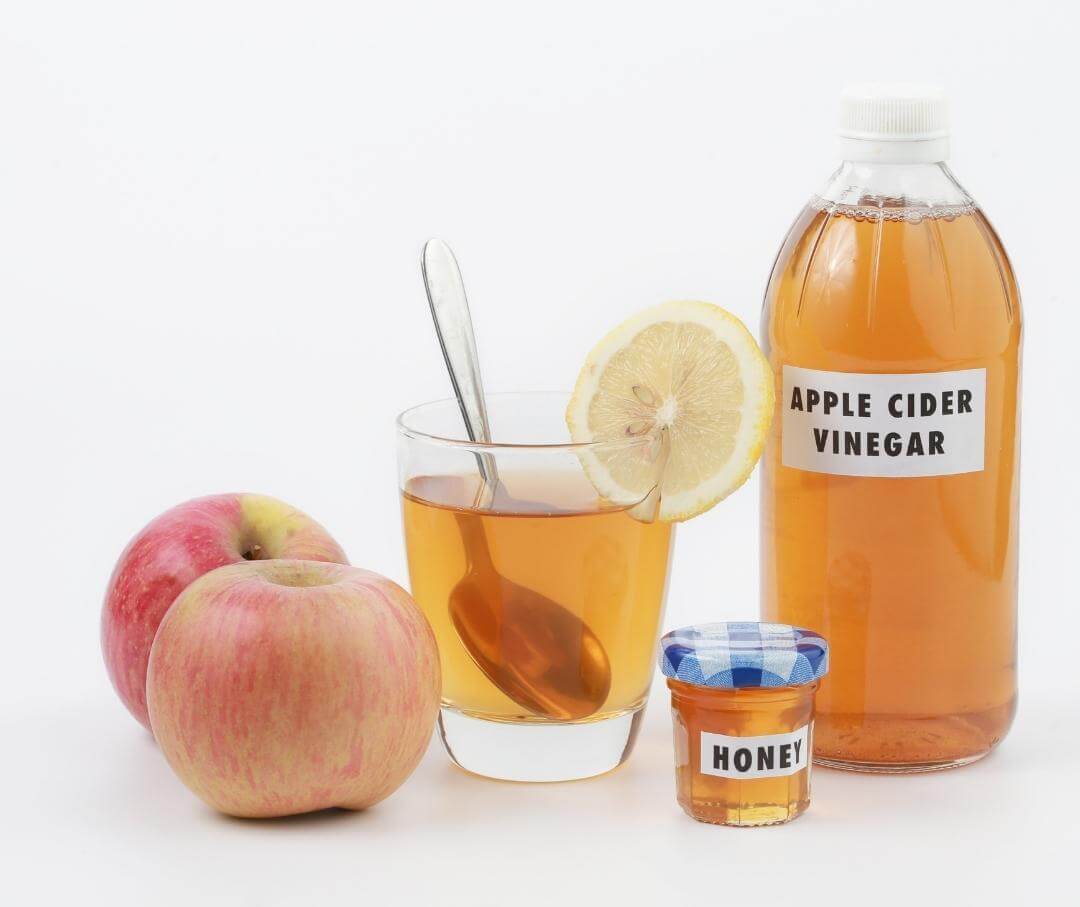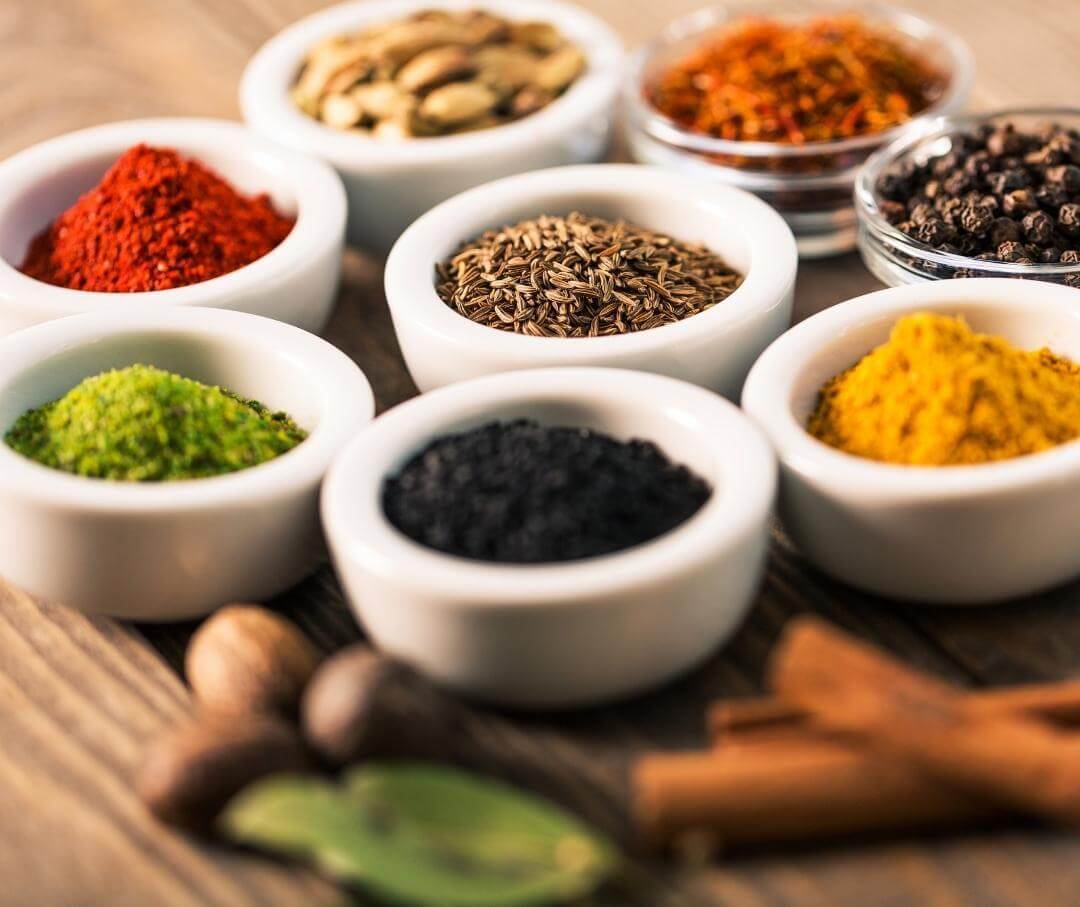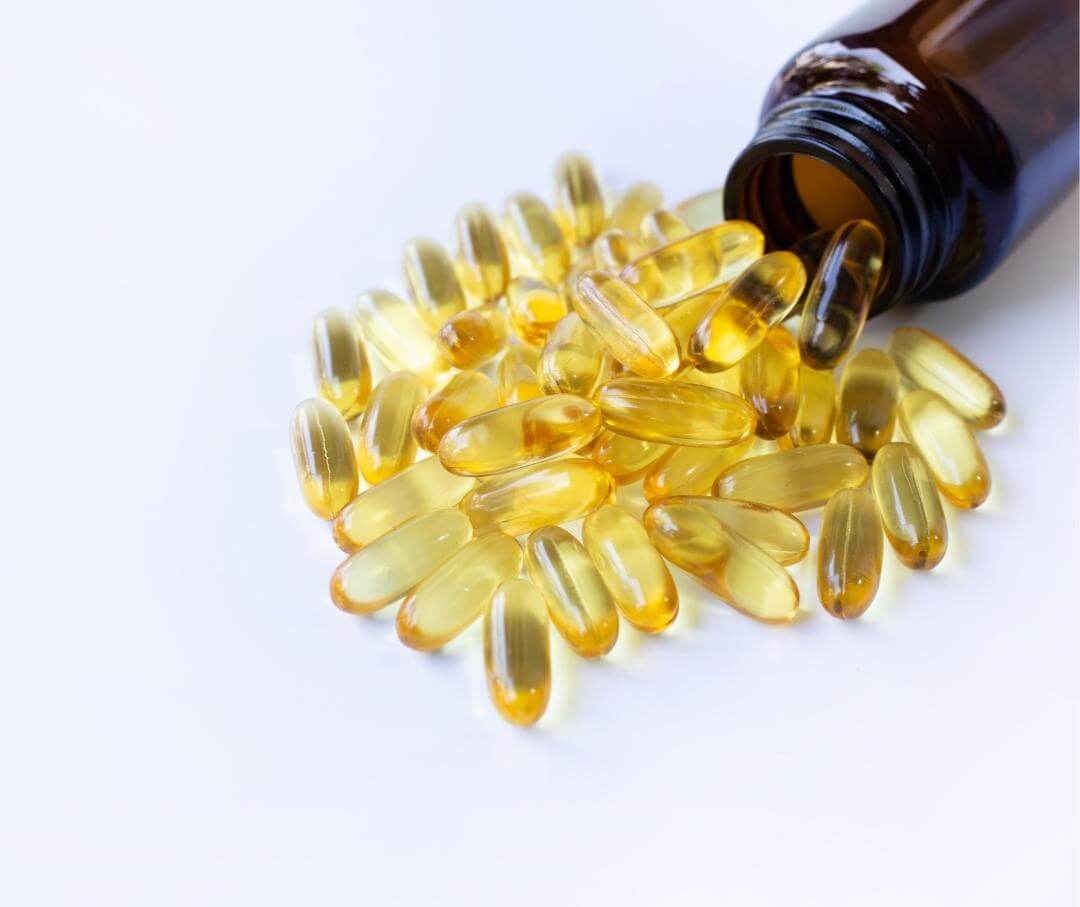What Are Chia Seeds?
Chia are small edible seeds that resemble poppy seeds. They can be black or white, but regardless of the color, the nutrition value is the same. Chia seeds are gluten-free and are readily available in major grocery stores.
If you grew up in the 80s, you may remember chia seeds from growing a chia pet! The green shoots that sprouted from the seeds gave your chia pet a great hairdo, but you may not have realized you could have safely eaten them as well.
Although no fabulous hair is promised when eating chia seeds, they do have many other health benefits. Chia seeds are a plant-based food source with a diverse range of nutrients. These tiny seeds are packed with healthy fats, fiber and minerals essential for maintaining good health.
{{mid-cta}}
Nutritional Highlights of Chia Seeds
Chia seeds are rich in:
- Alpha-linoleic acid (ALA, an omega-3 fatty acid)1
- Fiber
- Protein
- Iron
- Magnesium
The protein content of two tablespoons of chia seed (the recommended daily dosage) offers approximately 4.7 grams of protein.2 Protein helps to delay the glycemic effect of carb-based foods in your bloodstream. Including a variety of protein sources throughout your meals is recommended for good health and optimal blood sugar control.
<p class="pro-tip"><strong>Learn about </strong><a href="/blog/protein-for-weight-loss">why protein is good for weight loss</a></p>
An Ancient Food With a Modern Twist
Researchers believe chia seeds were first cultivated by the Aztecs in Central America in 3500 BC.
Every part of the seed was used for food or healing.3 Chia was mixed with food and drinks, ground into flour for baking, and the oil was pressed and reserved for cooking and medicinal treatments. Aztecs believed chia seed oil could help with wound healing, joint health, and sore throats.
A unique trait of the chia seed is the gelatinous texture that surrounds the seed after absorbing liquids. It is often described as gel-like or similar to liquid white glue. This may not sound hugely appealing to everyone, but most people grow accustomed to it quickly.
To reach full absorption the seeds should be soaked overnight or for a minimum of four hours. You can eat dry chia seeds, but more soluble fiber is available after soaking.
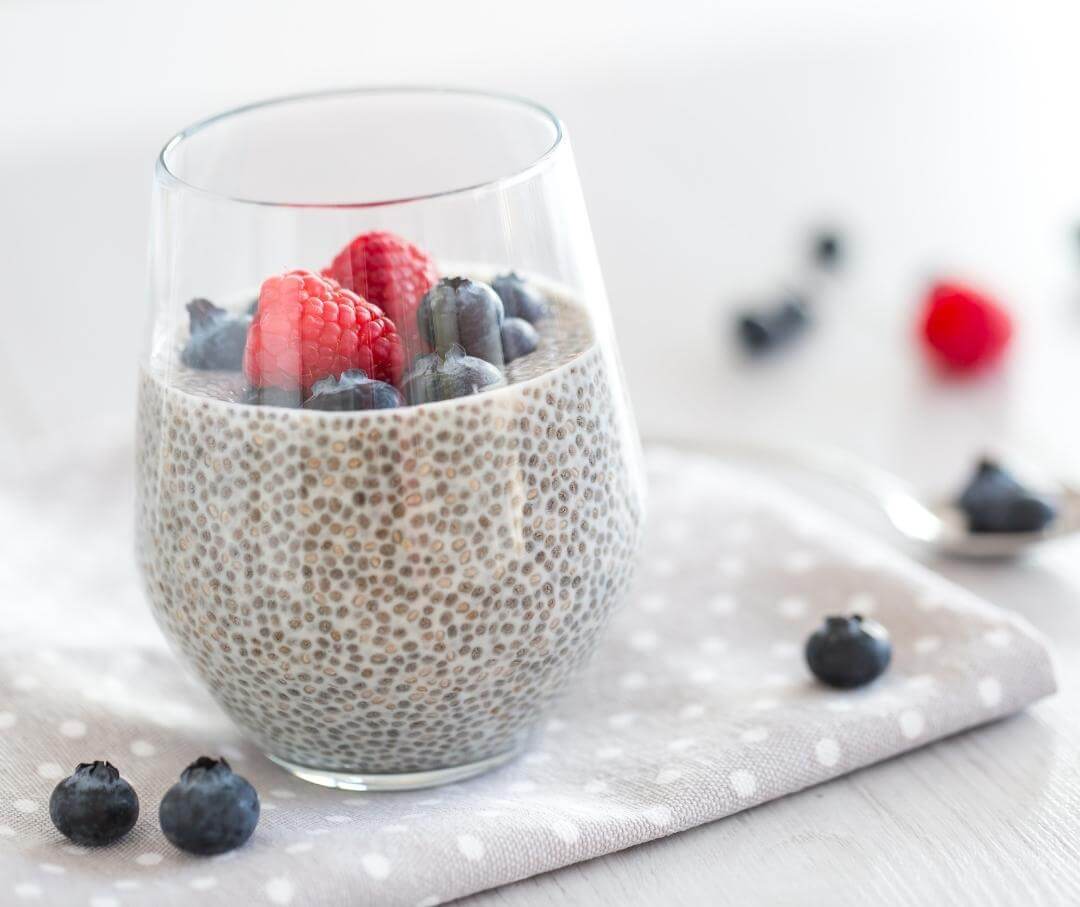
Can Chia Seeds Help With Weight Loss?
There is not enough evidence to suggest that chia seeds alone can help with weight loss. However, there are several nutritional aspects of chia seeds that can help you feel satisfied at meals, which can help you manage your daily caloric intake.
Chia Seeds Help You Feel Full
A recommended serving size for chia seeds is 1.5-2 tablespoons, which offers approximately 9g of fiber per serving, a significant portion of the daily recommended fiber intake!4
Fiber promotes meal-time satiety and helps you keep feeling full after eating. Including high-fiber foods throughout your day ensures your appetite and hunger needs are met, so the risk of getting snacky and eating excess calories is lower.
<p class="pro-tip"><strong>Learn about </strong><a href="/blog/high-fiber-low-carb-foods">high-fiber, low-carb foods for blood sugar control</a></p>
The natural healthy fats in chia seeds also play a supporting role in keeping you satisfied. Fat molecules are the densest of any macronutrient (they have 9kcal/gram) and require longer windows of time to be digested. Including healthy fats can help you feel full after a meal and reduce the chances of overeating at your next meal opportunity.

Other Health Benefits of Chia Seeds
Fiber is not only great for satiety and blood sugar control, but it is also an important key player in gut health and staying regular in the bathroom.
Whenever you include new high-fiber foods in your diet, like chia seeds, make sure you drink an extra glass of water. The soluble fiber found in chia seeds soaks up liquids, so not drinking enough can actually leave you feeling backed up.
Cholesterol Levels
Soluble fiber has also been shown to reduce LDL cholesterol (the type of cholesterol that increases your risk of heart disease)5. An article published in 2019 showed that consumption of water-soluble fiber reduced total cholesterol and LDL cholesterol levels by 5-10%.6
<p class="pro-tip"><strong>Learn more about </strong> <a href="/blog/lower-blood-sugar-cholesterol">reducing cholesterol and blood sugar levels</a>.</p>
Blood Pressure
A review published in 2005 analyzed the data from 25 random controlled trials that were examining the link between fiber in the diet and lowering blood pressure.7
The authors concluded that increasing fiber intake in the diet may lower blood pressure, especially in individuals who were already diagnosed with hypertension.
A second interesting observation they made at the end of their review was that food sources of fiber had a greater impact on lowering blood pressure readings compared to supplements.
<p class="pro-tip"><strong>Learn about </strong><a href="/blog/dash-diet-weight-loss">the DASH diet and weight loss</a></p>
Antioxidants
Antioxidants are health-promoting molecules that prevent harmful free radicals from accumulating in the body.
If the amount of free radicals exceeds the limits of antioxidants in your system, you can expose yourself to oxidative stress.8 Living in a state of oxidative stress can increase your risk of chronic diseases and cancer.9
Chia seeds are rich in polyphenols, a large group of antioxidants. They may help with circulation by maintaining healthy and flexible blood vessels.3
Other noteworthy antioxidants in chia seeds include:
- Caffeic acid, which protects nerve cells against damage10
- Rosmarinic acid, which is linked to improving cognitive performance11
- Myricetin, which protects against cardiovascular disease12
- Quercetin, which is being studied for its anti-hypertensive properties13
Possible Improved Insulin Sensitivity
A 2013 study conducted on rats displayed signs of improved insulin sensitivity after eating chia seed oil. After 3 months the rats had increased insulin function and decreased rates of dyslipidemia.14
A 2022 study, also done on rats, confirmed the same findings. More research is required in this field.15
<p class="pro-tip"><strong>Learn about </strong><a href="/blog/increase-insulin-sensitivity">8 ways to boost insulin sensitivity</a></p>
How to Incorporate Chia Seeds Into Your Diet
If you’re on TikTok you may have seen content creators mixing chia seeds with water first thing in the morning and drinking it for breakfast. If you don’t mind the texture, this method is safe to follow.
It is worth noting that chia seeds mixed into water are not a full meal and will not provide enough sustenance for an adult (or a child).
To meet your energy and nutrition requirements you need to include more food groups in your meal. Consider picking another source of protein and adding complex carbohydrates for energy.
As mentioned earlier, there is no established link between drinking or eating chia seeds and losing weight. Drinking chia water first thing in the morning can support your overall health, but on its own is not likely to help you lose weight.
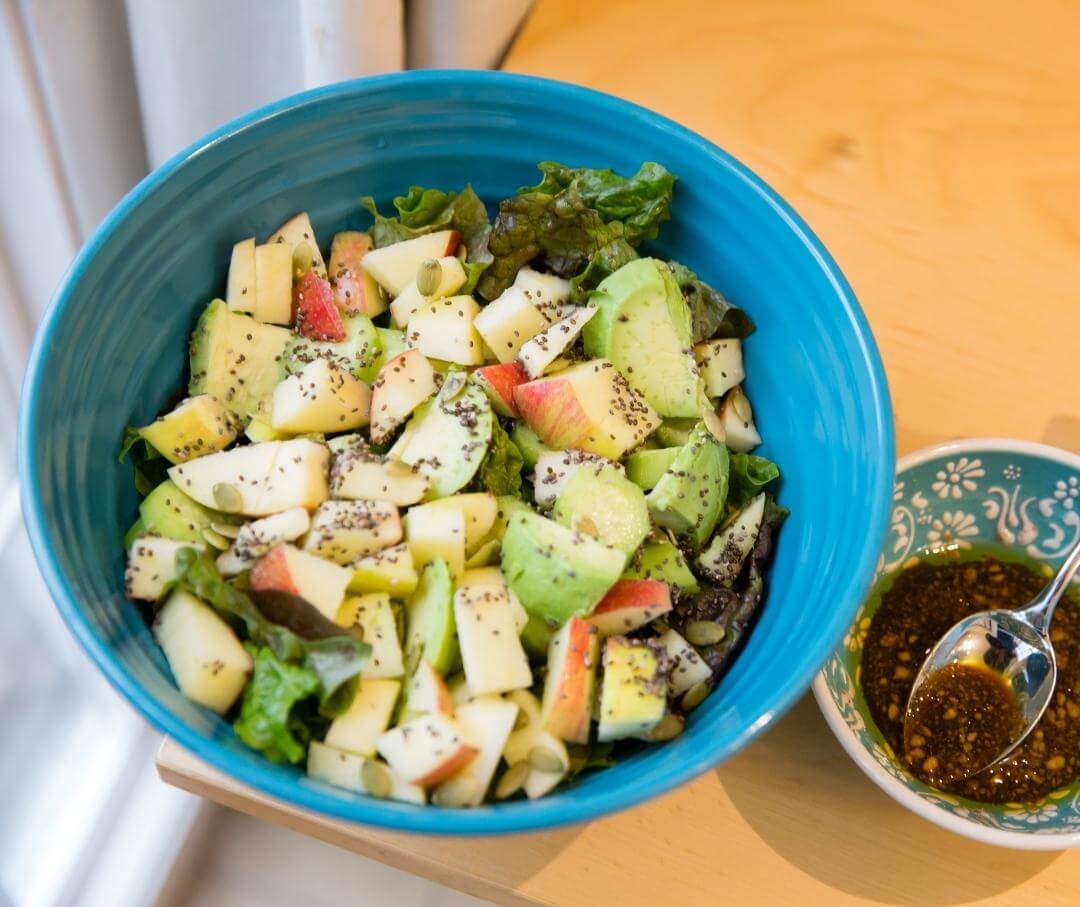
Popular Ways to Eat Chia Seeds
- Lemon raspberry chia seed pudding
- Add them to smoothies, like this orange kale chia smoothie
- Sprinkle them in your leafy salad for lunch
- Garnish your morning oatmeal or yogurt
Should I Eat Ground or Whole Chia Seeds?
Both ground and whole chia seeds share the same nutritional composition. However, a study in 2020 examined how the body absorbs ground chia seeds versus whole ones. They found that ground chia seeds offer higher uptake and digestibility of omega-3-fatty acids, proteins, and antioxidants.16
If you have a sensitive stomach or find chia seeds hard to digest, you may opt for ground options over whole seeds. Some people enjoy the texture of chia seeds and their preferences will guide their decision. Both options are considered good.
Are Chia Seeds Safe for Everyone?
Chia seeds are safe for everyone. They are a gluten-free option and a good plant-based protein source, and a small amount goes a long way.
It is rare for anybody to experience an allergic reaction to chia seeds but not impossible. If you experience any negative reaction, stop eating chia seeds and follow up with your health care provider if needed.
Using a CGM to Track Your Blood Sugar Response to Chia Seeds
When you introduce a new food, like chia seeds, you may be curious how your blood glucose will respond. You can use your continuous glucose monitoring (CGM) device to view real-time data on your blood sugars.
The easiest way to observe any effect chia seeds will have on your blood sugars is to add them to the food you are regularly eating. Ideally, you will already have a good understanding of how those meals are influencing your blood sugars.
Pay close attention to the amount of time it takes for your glucose numbers to change. Excellent blood sugar control suggests a gradual change over time, so if you see any sharp spikes you may want to experiment with your meal items and exercise to see if you can slow down your glucose metabolism.
- Item 1
- Item 2
- item 3
Topics discussed in this article:
References
- Ullah, R., Nadeem, M., Khalique, A., Imran, M., Mehmood, S., Javid, A., & Hussain, J. (2016). Nutritional and therapeutic perspectives of Chia (Salvia hispanica L.): a review. Journal of food science and technology, 53(4), 1750–1758. https://doi.org/10.1007/s13197-015-1967-0
- United States Department of Agriculture, Agricultural Research Service, FoodData Central. (2018). Seeds, chia seeds, dried. Retrieved June 6, 2022, from: https://fdc.nal.usda.gov/fdc-app.html#/food-details/170554/nutrients
- Knez Hrnčič, M., Ivanovski, M., Cör, D., & Knez, Ž. (2019). Chia Seeds (Salvia Hispanica L.): An Overview—Phytochemical Profile, Isolation Methods, and Application. Molecules, 25(1), 11. https://doi.org/10.3390/molecules25010011
- Gómez-Velázquez, H. D., Aparicio-Fernández, X., Mora, O., González Davalos, M. L., de los Ríos, E. A. & Reynoso-Camacho, R. (2022). Chia seeds and chemical-elicited sprouts supplementation ameliorates insulin resistance, dyslipidemia, and hepatic steatosis in obese rats. Journal of Food Biochemistry, 00, e14136. https://doi.org/10.1111/jfbc.14136
- Soliman G. A. (2019). Dietary Fiber, Atherosclerosis, and Cardiovascular Disease. Nutrients, 11(5), 1155. https://doi.org/10.3390/nu11051155
- Surampudi, P., Enkhmaa, B., Anuurad, E., & Berglund, L. (2016). Lipid Lowering with Soluble Dietary Fiber. Current atherosclerosis reports, 18(12), 75. https://doi.org/10.1007/s11883-016-0624-z
- Whelton, S.P., Hyre, A.D., Pedersen, B., et al. Effect of dietary fiber intake on blood pressure: a meta-analysis of randomized, controlled clinical trials. 2005. In: Database of Abstracts of Reviews of Effects (DARE): Quality-assessed Reviews [Internet]. York (UK): Centre for Reviews and Dissemination (UK); 1995-. Retrieved June 6, 2022, from: https://www.ncbi.nlm.nih.gov/books/NBK71466/#_NBK71466
- Alkadi H. (2020). A Review on Free Radicals and Antioxidants. Infectious disorders drug targets, 20(1), 16–26. https://doi.org/10.2174/1871526518666180628124323
- Pizzino, G., Irrera, N., Cucinotta, M., Pallio, G., Mannino, F., Arcoraci, V., Squadrito, F., Altavilla, D., & Bitto, A. (2017). Oxidative Stress: Harms and Benefits for Human Health. Oxidative medicine and cellular longevity, 2017, 8416763. https://doi.org/10.1155/2017/8416763
- Muhammad Abdul Kadar, N. N., Ahmad, F., Teoh, S. L., & Yahaya, M. F. (2021). Caffeic Acid on Metabolic Syndrome: A Review. Molecules (Basel, Switzerland), 26(18), 5490. https://doi.org/10.3390/molecules26185490
- Hitl, M., Kladar, N., Gavarić, N., & Božin, B. (2021). Rosmarinic Acid-Human Pharmacokinetics and Health Benefits. Planta medica, 87(4), 273–282. https://doi.org/10.1055/a-1301-8648
- Wang, L., Wu, H., Yang, F., & Dong, W. (2019). The Protective Effects of Myricetin against Cardiovascular Disease. Journal of nutritional science and vitaminology, 65(6), 470–476. https://doi.org/10.3177/jnsv.65.470
- Marunaka, Y., Marunaka, R., Sun, H., Yamamoto, T., Kanamura, N., Inui, T., & Taruno, A. (2017). Actions of Quercetin, a Polyphenol, on Blood Pressure. Molecules (Basel, Switzerland), 22(2), 209. https://doi.org/10.3390/molecules22020209
- Oliva, M. E., Ferreira, M. R., Chicco, A., & Lombardo, Y. B. (2013). Dietary Salba (Salvia hispanica L) seed rich in α-linolenic acid improves adipose tissue dysfunction and the altered skeletal muscle glucose and lipid metabolism in dyslipidemic insulin-resistant rats. Prostaglandins, leukotrienes, and essential fatty acids, 89(5), 279–289. https://doi.org/10.1016/j.plefa.2013.09.010
- Gómez-Velázquez, H., Aparicio-Fernández, X., Mora, O., González Davalos, M. L., de Los Ríos, E. A., & Reynoso-Camacho, R. (2022). Chia seeds and chemical-elicited sprouts supplementation ameliorates insulin resistance, dyslipidemia, and hepatic steatosis in obese rats. Journal of food biochemistry, e14136. Advance online publication. https://doi.org/10.1111/jfbc.14136
- Calvo-Lerma, J., Paz-Yépez, C., Asensio-Grau, A., Heredia, A., & Andrés, A. (2020). Impact of Processing and Intestinal Conditions on in Vitro Digestion of Chia (Salvia hispanica) Seeds and Derivatives. Foods (Basel, Switzerland), 9(3), 290. https://doi.org/10.3390/foods9030290

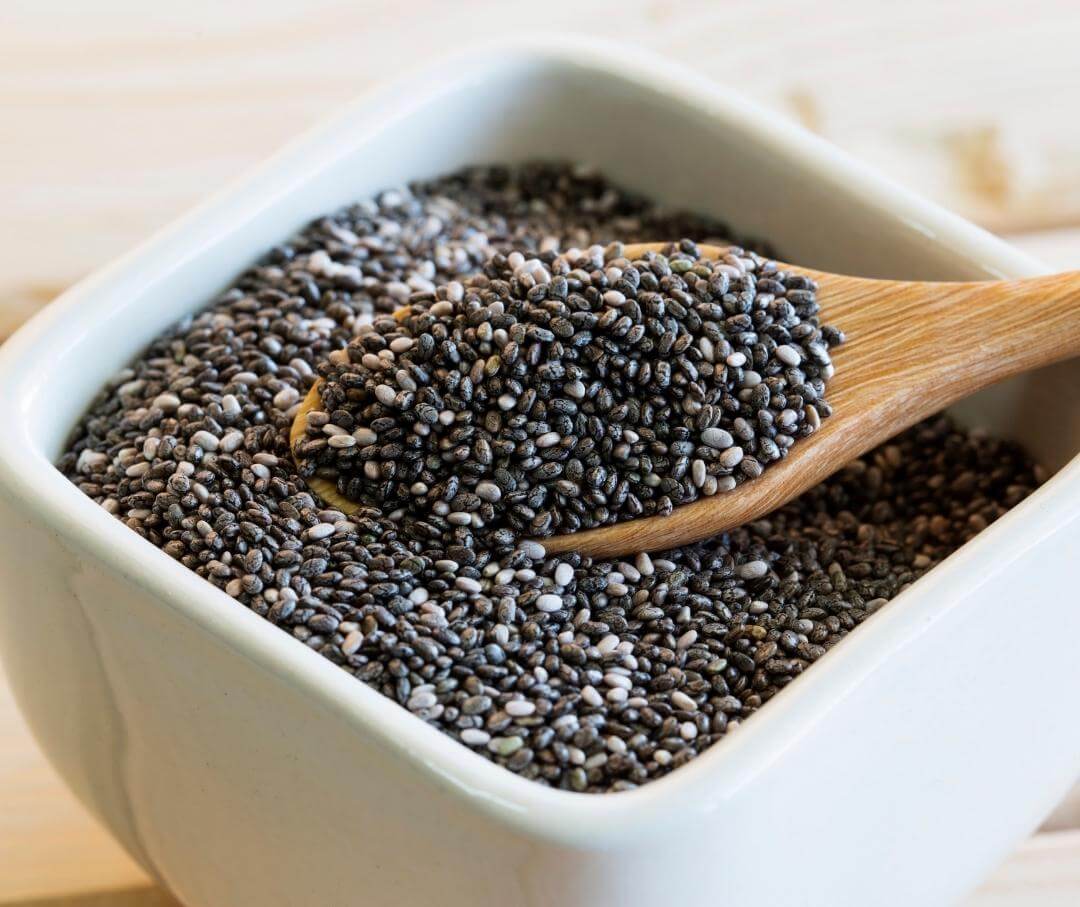



.jpg)
